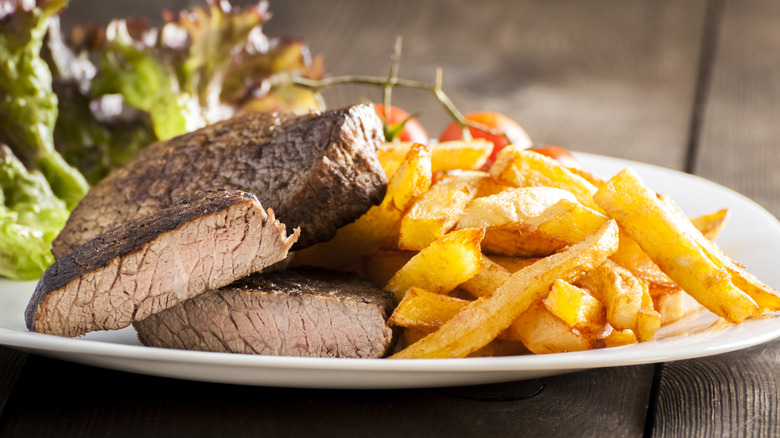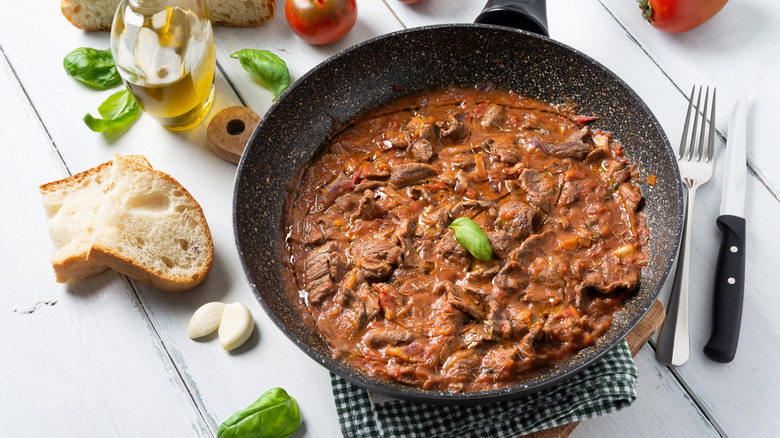How To Stop Your Steaks From Turning Gray
No matter how carefully you cook your steak, sometimes things go wrong. There's nothing quite as disappointing as cutting into what was once a beautiful cut of meat and seeing that the inside is some color other than pink. If it is black on the outside but blue on the inside, your steak may be too rare to eat and can be quickly remedied by additional cooking. If the interior is gray, though, you've got the opposite problem on your hands. According to Douglas Keane, co-owner of the Michelin-starred California restaurant Cyrus, any gray you see inside the steak indicates an area that has been overcooked. It's a tragedy, but it's something easily avoidable as long as you own a meat thermometer.
So what makes the inside of your steak go gray? "The blood has been cooked out of the protein because the internal temperature in that area reached about 150 degrees Fahrenheit," Keane explained. (The internal temperature of a medium-rare steak ranges from 130 to 135 degrees Fahrenheit.) As he advised, "A shorter time frame will definitely assist in avoiding gray bands in the finished steak. Also, resting the meat so the juices are allowed to settle back to a temperature that is consistent throughout the entire piece of meat."
What can you do if your cooked steak is already gray?
If you find yourself faced with a gray-banded steak, Douglas Keane shared that there's not a whole lot you can do. "Just eat it or throw it out," he said. "Be a little more careful on the next go-around." While a dry and tough steak isn't what you'd want to slice into and eat on its own, there are still some ways to repurpose overcooked meat that won't give your jaw a workout.
When you cook your steak too long, its marbling melts and evaporates, leaving it dry and flavorless. The solution is to add back the missing moisture and tasty fat, but you'll need to do so by incorporating the steak into another recipe. One way would be to slice it thinly, pile the slices on a sub roll, and smother them with Cheez Whiz and sauteed onions for a Philly-style cheesesteak. Another would be to simmer the beef in tomato sauce to make steak pizzaiola that can be served with pasta. Your overly well-done steak can also be chopped up and used in burritos or tacos or ground in a food processor to make a filling for dumplings. If you have a slow cooker, you could do as we suggest for leftover pot roast: Simmer it in barbecue sauce until it falls apart and can be shredded to make a delicious pulled beef sandwich.

